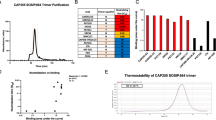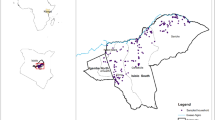Abstract
IN 1936 it was shown that the blood of monkeys from endemic yellow fever zones in Africa contained immune bodies to the yellow fever virus, as judged by the intraperitoneal mouse protection test: the sera of monkeys outside the endemic zone did not contain immune bodies1. These results have since been confirmed by other workers. At the same time, the blood of a sheep from the Gambia was found to possess virucidal bodies against the yellow fever virus. Since then virucidal bodies have been found in the blood of cattle, sheep, dogs, pigs and a camel: the significance of these findings in domestic animals awaits further study, since virucidal bodies were present in the blood of certain domestic animals living outside the commonly accepted yellow fever zone.
This is a preview of subscription content, access via your institution
Access options
Subscribe to this journal
Receive 51 print issues and online access
$199.00 per year
only $3.90 per issue
Buy this article
- Purchase on SpringerLink
- Instant access to full article PDF
Prices may be subject to local taxes which are calculated during checkout
Similar content being viewed by others
References
Findlay, G. M., Stefanopoulo, G. J., Davey, T. H., and Mahaffy, A. F., Trans. Roy. Soc. Trop. Med. and Hyg., 29, 419 (1936).
Rights and permissions
About this article
Cite this article
FINDLAY, G., COCKBURN, T. Possible Role of Birds in the Maintenance of Yellow Fever in West Africa. Nature 152, 245 (1943). https://doi.org/10.1038/152245a0
Issue date:
DOI: https://doi.org/10.1038/152245a0



